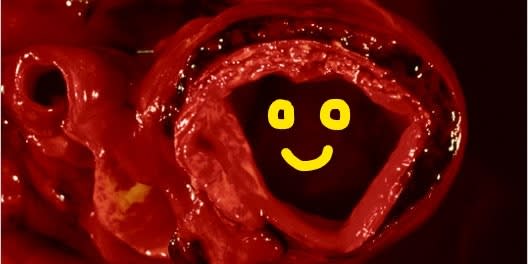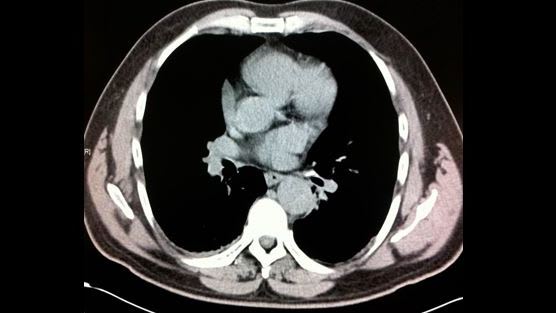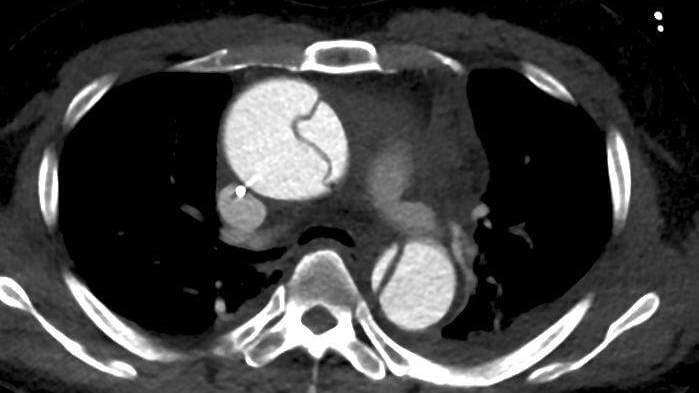Aortic dissection.


After breaking through the Tunica intima the blood rips through the "middle layer"or Tunica media. PS the Tunica albuginea is below the waist.

The DeBakey classification has l, ll , lll. In l just the ascending aorta is involved. In ll just the descending aorta is involved. In lll both the ascending and descending aorta are involved. I think most people use the Stanford Classification.

Always a bit surprising that it is not higher. Percentage is from Aldeen et al 2009; IRAD data. I suppose it is good to remember that very occasionally the patient may not complain of pain.

You can just make out a line across the descending aorta. IV contrast would have easily shown the dissection.

Debakey (in his 90s) developed a dissection and declined an OT despite what his colleagues wanted. As he lost consciousness they decided to do it anyway--he survived.
Men have about double the risk of developing an aortic dissection compared to women.

Occasionally in a dissection involving the ascending aorta it can dissect into the right coronary artery as seen here (as the RCA and LCA come off the aorta). If you suspect it you need to do the definitive investigation ASAP which is a CTA.

There are many symptoms, often neurological associated with obstruction of flow in aortic branches by the dissection. If a patient has chest/back pain and a neurological symptom---think dissection.

You are looking to decrease the heart rate to 60/min then the BP to ideally 120 systolic. Pain will decrease with the drop of heart rate and BP. Fentanyl is useful as a relatively cardiovascularly safe narcotic. MgS04 has no role. GTN is OK but can cause a reflex tachycardia.
You can sometimes see a Type A dissection in the PLAX, supra sternal and Apical 5 chamber views.